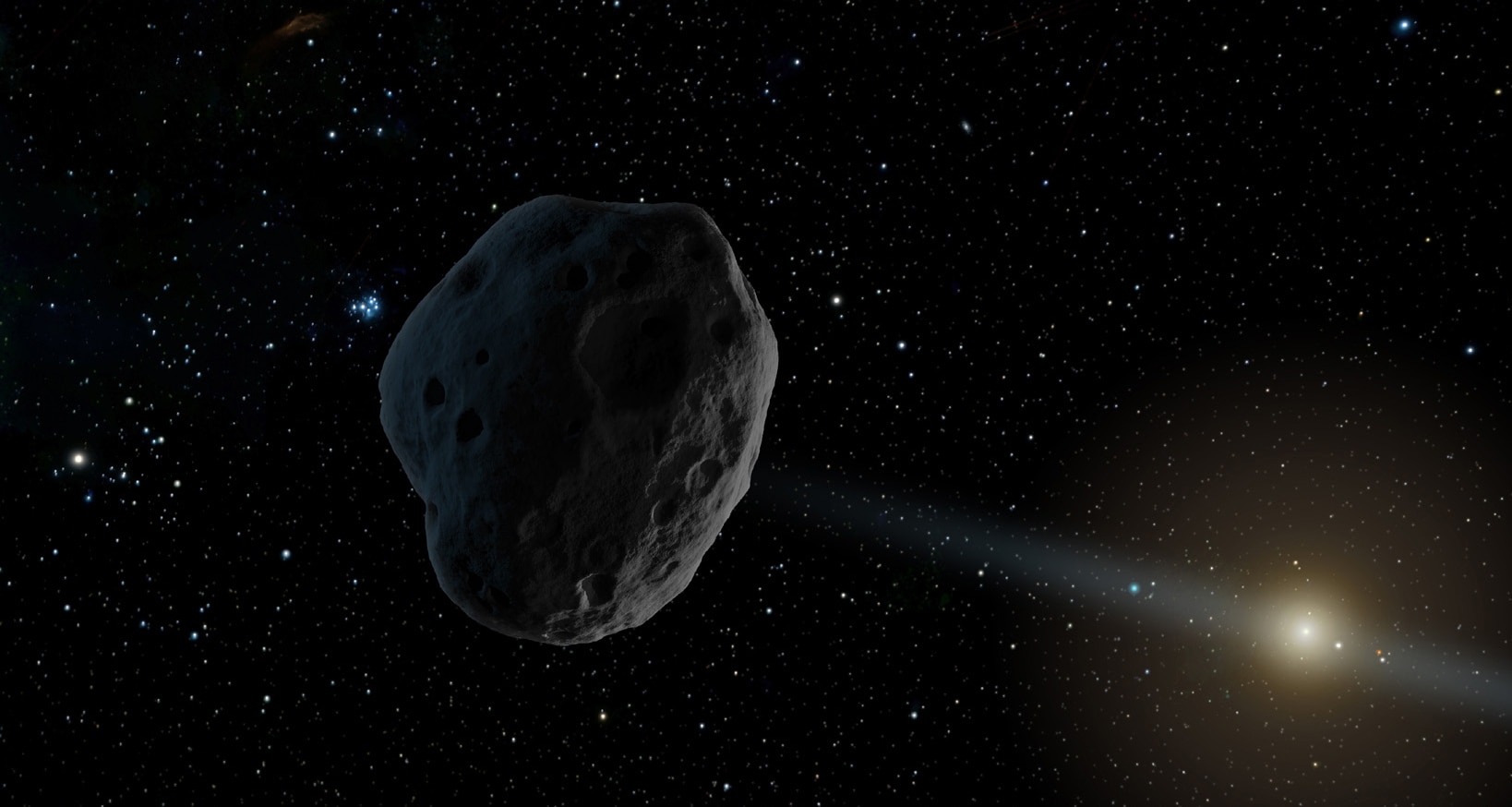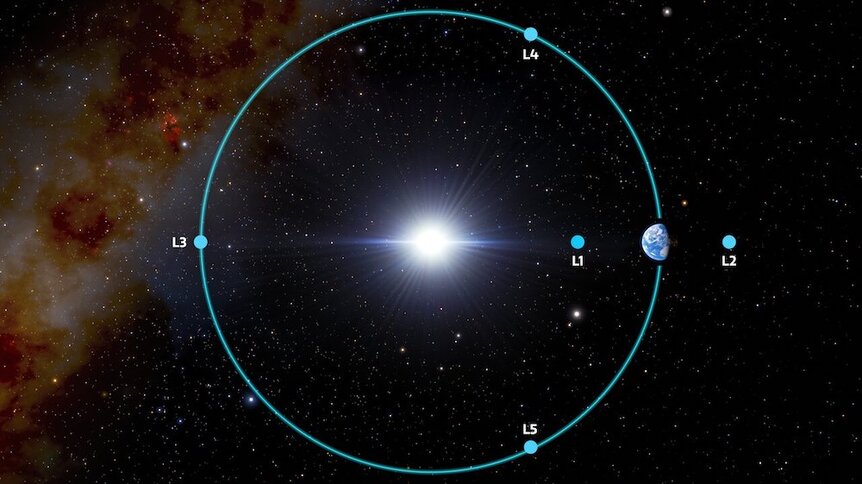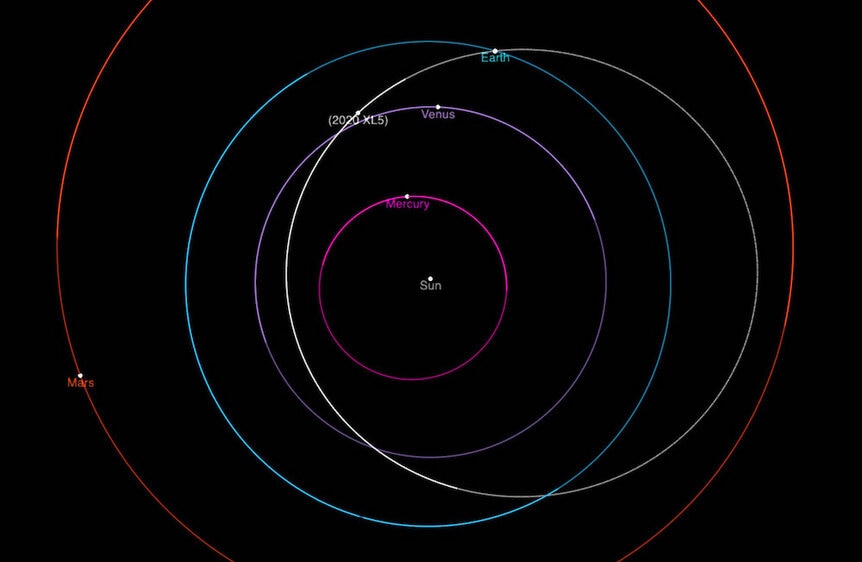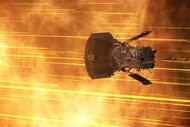Create a free profile to get unlimited access to exclusive videos, sweepstakes, and more!
Second-ever Earth Trojan asteroid found!
2020 XL5 shares an Earth-like orbit.

An asteroid over a kilometer across has just officially become only the second Earth Trojan asteroid known — an asteroid that shares its orbit with Earth.
Well, kinda. Bear with me a sec and I'll explain.
The asteroid is called 2020 XL5, and was discovered in 2020 in images taken by the Pan-STARRS survey, which sweeps the sky to look for transients: objects that move or change brightness, like supernovae, stellar eruptions, and asteroids and comets.
2020 XL5 has a mildly elliptical orbit that is also a little bit tilted with respect to Earth's, by about 14°. Although it gets as close to the Sun as 90 million km and as far as 210, its semi-major axis — defined as half the length across the long dimension of the ellipse — is almost exactly 150 million km, the same as Earth. That makes its orbital period, its year, almost exactly the same as Earth's well. In other words, it goes around the Sun in the same amount of time the Earth does.
That's important! In the late 18th century two mathematician astronomers, Euler and Lagrange, discovered that if you have a planet orbiting a star, there are several stable points along the orbit where the gravitational and centrifugal forces between the star and planet balance out. These points, now called Lagrange points, are both interesting and useful, because if you place an object there it will tend remain there.
There are five such points: One in between the planet and star (L1), one on the opposite side of the planet (L2), one on the opposite side of the star (L3), and two others 60° ahead and behind the planet in its orbit (L4 and L5). L1 – 3 are metastable; if you poke an object there hard enough it will move away, but L4 and L5 are more stable. Place something in those spots and it can withstand small perturbations, staying at or near that point.
Jupiter, having the most mass of any planet, has really stable L4 and L5 points, and a whole fleet of asteroids shares orbits with the huge planet. The first few of these were named after figures in the Trojan War, so generically we call L4 and L5 the Trojan Points, with L4 called the leading point and L5 the trailing point.
Until now only one Earth Trojan asteroid had been found: 2010 TK7, which is about 400 meters across. It was found by accident in observations taken by the space-based WISE mission. It turns out these asteroids are very difficult to discover, because they tend to be about 60° from the Sun in our sky, so from Earth they can only be observed right after sunset or before sunrise, and even then are pretty low, making observing windows short. Even from space it's hard; the OSIRIS-REx mission looked for L4 Earth Trojans as it passed near that region of space and didn't find any.
But now we have another! 2020 XL5 is bigger, probably about 1.2 kilometers wide. Getting the size of a small asteroid is tough, because they appear as dots in our ‘scopes. We have to judge their size based on how bright they appear, how far away they are, and how reflective we think they are — a small shiny asteroid is just as bright as a bigger dark one.
Follow-up observations of XL5 using different telescopes (link to paper) were used to tighten up the orbital characteristics, and in fact allowed astronomers to calculate its position over time well enough to look for older, archived observations taken of it before it was actually discovered, called precovery images. That lengthens the baseline of observation times, which really help nail down the orbit.
Here's where things get fun: Neither TK7 nor XL5 physically share Earth's orbit. Both orbit the Sun on ellipses, but both have semi-major axes the same as Earth's so they both have periods of one year. Both are always ahead of Earth in their orbits around the Sun, and sometimes get a bit closer and a bit farther from Earth due to their elliptical orbits*. In essence, both orbit around Earth's L4 point. If you were above the solar system looking down on Earth and stayed directly above Earth, you'd see both asteroids make a roughly kidney-bean shaped pattern over the course of a year.
I know, it's a little bit weird, but orbital mechanics is a lot weird. The point here is that they never get very close nor far from Earth, though their distances do vary.
These kinds of orbits are not permanently stable. The gravity of Venus and other planets constantly tugs on them, and over long periods can destabilize the asteroids, sending them off on a different trajectory. Gravitational simulations show that 2010 TK7's orbit is unstable over a period of around 15,000 years, so it must have wandered into this current orbit less than that long ago, probably more like 2,000 years ago.
Similar simulations show that 2020 XL5 probably became an Earth Trojan about 600 years ago, and should remain one for about another 5,000 years before getting kicked into a different orbit.
In general, Earth Trojans make for desirable space probe targets, because their speed relative to Earth is very low. Once you get a probe away from Earth it doesn't need much extra fuel to get there — and it would be easier to scoop up samples and return them to Earth, too.
However, both XL5 and TK7 have orbits tilted with respect to us, making it much harder to get to them. But the discovery of XL5 is intriguing. It hints that largish rocks may still be out there awaiting discovery, and could have more inviting orbital configurations. We've only visited a handful of asteroids up close, so this keeps the door open for potential future missions.
*Though not close enough to be a threat, which is good, given the sizes of these rocks.
















